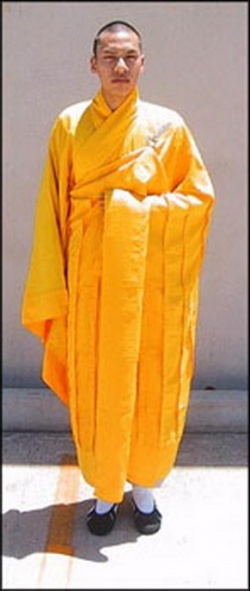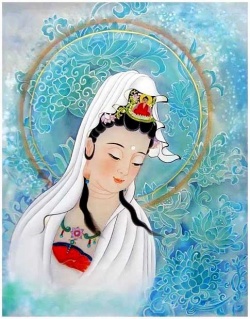Dharmas with anxiety and without: the Path
So we can find 3 additional characteristics accompanying the notion of dharma:
It is something that could be well defined and differentiated in the complicated flow of existence, as some final reality.
It is in eternal state of anxiety.
It could be and should be pacified and brought to inner cessation. (AK1; 15)
One element here is very important. It is the notion of “prajna”, which can be roughly translated as “understanding”. It is a mental ability that is always present in each moment of the consciousness. In a usual plan of existence it means simply understanding, the ability to understand something.
But it is the ability to differentiate things and in abhidharmic literature becomes “prajna amalā” – “pure knowledge”; “Anasrava prajna” – “uninfluenced understanding”(with worldly conditions). The presence of it gives a special character to all flow of dharma; it becomes the central guiding element and all other elements accompanying it – senses, thoughts, acts of will, etc. become “clean” (AK1; 2).
The presence of this element acts as a remedy to all other elements that are unbeneficial (akušala) for the movement towards cessation. They gradually disappear and cannot arise again in this particular flow.
As a first thing that is understood when prajna is present in the flow comes the knowledge of the theory of elements, understanding that there are no permanent personality, that so called “personality” is in fact a set of 18 ingredients (dhātu).
When the wrong views about “kind of” existing personality is dispelled, the Path emerges that leads to the final liberation.
For each “sinful” or anxiously unbeneficial element there is some antipode among the qualities of wisdom. When it is suppressed, it becomes anupatti-dharma, an element that will never return.
It is replaced by “lack of content”. And this “lack of content” (nirodha) is called also “cessation by knowledge” (pratisankhyā-nirodha) (AK1; 4).
However, by knowledge you can stop only a part of all dharma flashes. Others have to be suppressed by meditative concentration, dhyana. Yoga can not only eliminate unbeneficial elements of the mind and morality, but also to stop the very appearance of the being or content of consciousness.
In Buddhism the matter is reduced to the sense data.
The practical observations have demonstrated that in a certain degree of concentration the senses of taste and smell disappear, because mind is in a single-pointed concentration. From here it is concluded, that the objects of those senses have disappeared.
Abhidharmakoša rises a question how many elements can be ceased by knowledge and how many with concentration. The answer was that some mental elements can be suppressed with a simple knowledge, for example, faith in real personalities and its effects – all feelings, ideas, will acts – disappear, as soon the remedy is found, i.e. the anātma theory is accepted. Other contaminated (sasrava) elements, such as all “material” elements (dhātu 1-5 and 7-10) and all the sense consciousnesses (dhātu 13-17) could be ceased by concentration only (AK1; 40).
Abhidharmakoša: “10 classes of elements are ceased with meditative concentration and 5 classes of sense consciousnesses alike. Last three classes of consciousness, dharma elements and mental consciousness are of 3 kinds:
Potential affects and dharmas of their entourage and their effects, together with accompanying dharmas can be ceased by the help of „true views”.
Other dharmas with inflow of affects are ceased with meditations.
Dharmas without inflow of affects are not eliminated.
Both the contaminated and material dharmas cannot be eliminated with the „true views”. Acts of body and speach are considered „material”. What has not been created by Mind but by 5 organs of senses can not be ceased by „true views”.
The purified Noble elements (anāsrava-dharma) is not possible to eliminate, but they also disappear in the moment of Nirvana, because no new karma is created, no more elements of anxiety (dukha) that were a cause of the world’s anxiety.
It is considered there are parallel worlds where are no matters of certain kinds and also no sensible perception abilities of corresponding kinds – those are worlds of weakened or purified matter (AK1; 30).
Abhidharmakoša assert exists a World of Forms, where are elements of 14 classes, but don’t have classes of consciousness of smell, taste and corresponding objects of smell and taste.
In the World of Forms there is no smell and taste, because they are related with the characteristics of the group of material food, for that reason in the material world is what doesn’t have craving for the smell and taste.
The world of Forms is the world of first degree of meditative concentration. There are organs of smell and taste, but no smell or taste themselves, because the willing to act that is typical to the 6 organs of senses is created by subject himself not by objects of senses.
Besides the World of Forms it is believed there is also a World of No-Forms, where exist only classes of dharma-elements of Mind and Mental Consciousness.
In this World of No-Forms dwell those beings, which doesn’t have craving for material. For this reason there doesn’t exist 10 classes of elements with material nature and 5 classes of sense consciousnesses that relies on matter and to which the matter is an object.
One can get into those worlds of Forms and No-Forms by taking birth there (utpatti) or by meditative concentration (samapatti), contemplation that delivers one to the highest plans of existence and not only Buddhists.
For purely spiritual beings the consciousness and mental elements are pacified in the certain states of very deep trance-like concentration. Two kinds of trance exist: unconscious trance and pacifying trance.
But it is not the eternal extinction yet. At the very end the final cessation of the manifestations of the pure dharma of the highest beings is reached. It is replaced with eternal lack of content. It is Nirvana – complete extinction of samskrta-dharmas and also asamskrta dharmas disappear.
In this way the goal of the process of world, the result of all actions and efforts to purify and spiritualize is the complete extinction of all mental processes and consciousness. Buddhism philosophy states that consciousness cannot arise alone, without its entourage, i.e. phenomena of senses, acts of will, etc. and the last moment in Bodhisattva life before merging with the Absolute (Nirvana) will be the last moment of his consciousness in its continuous flow through many lifetimes.


